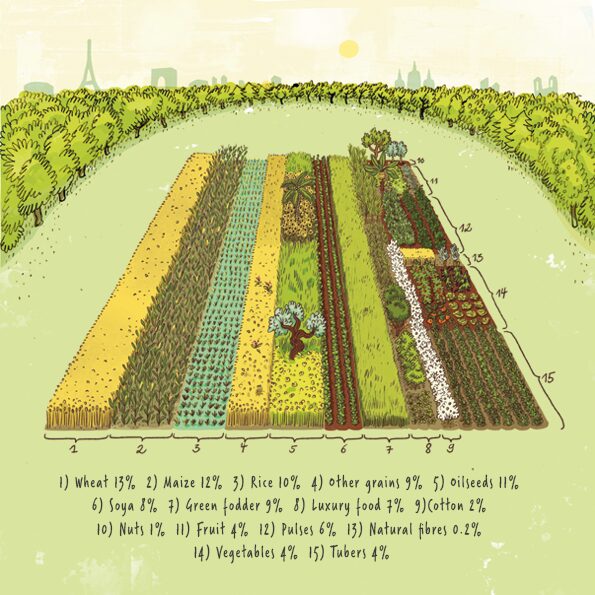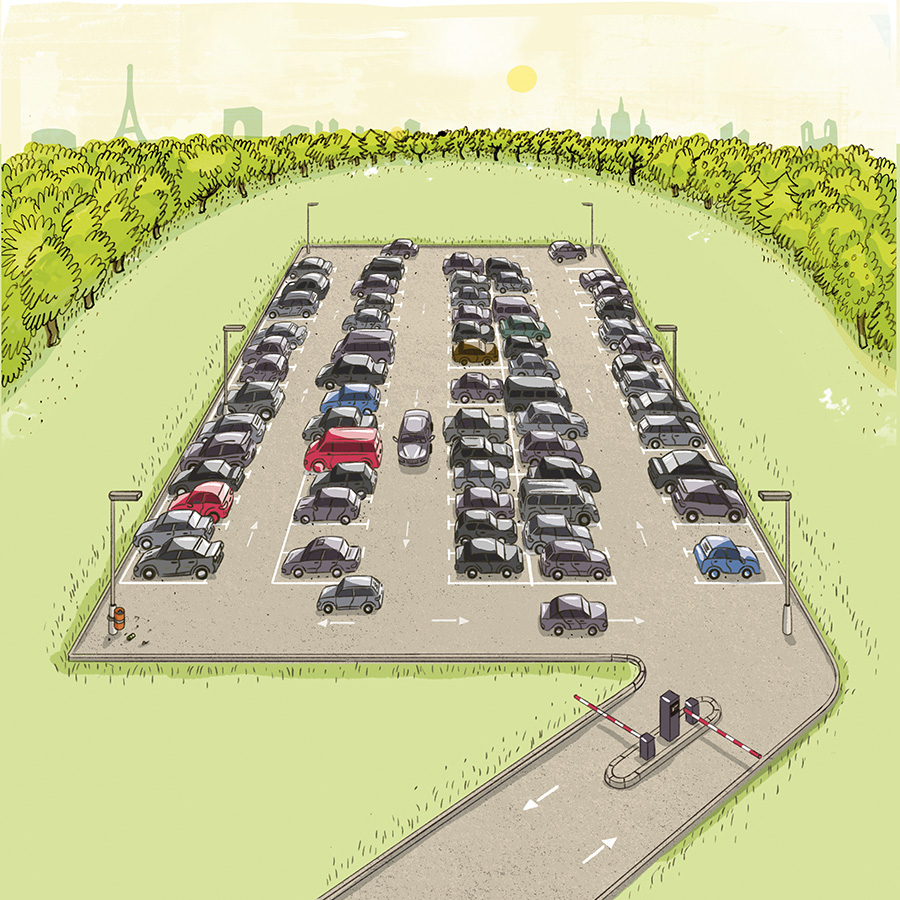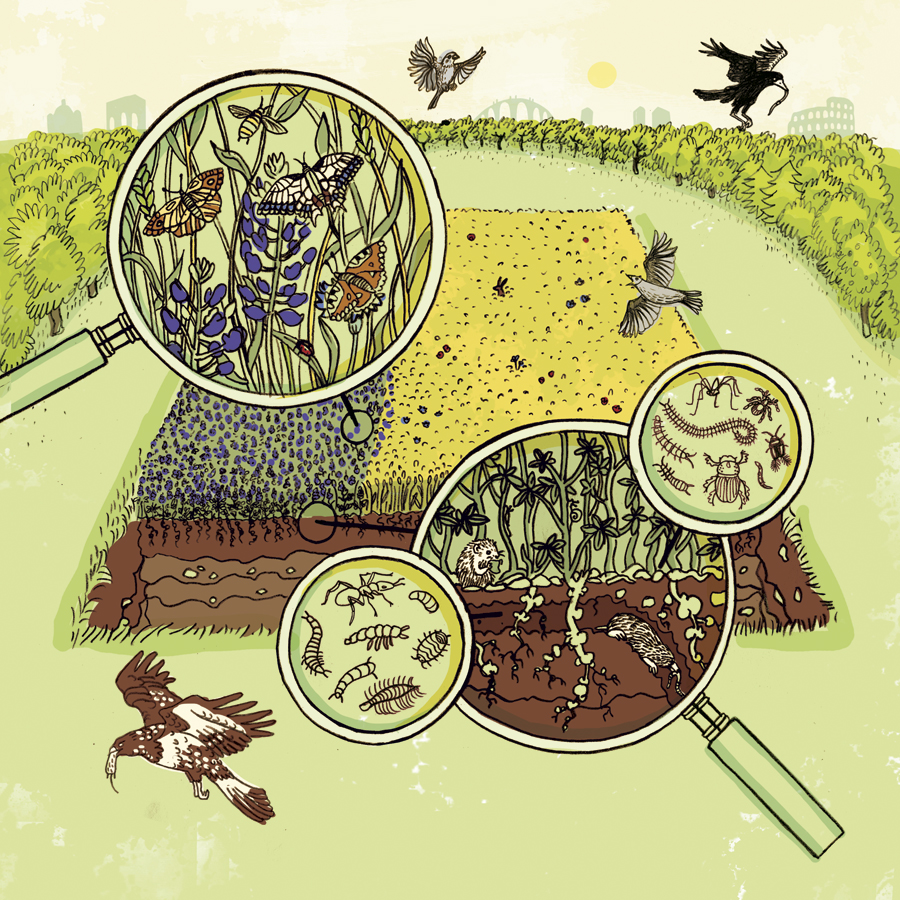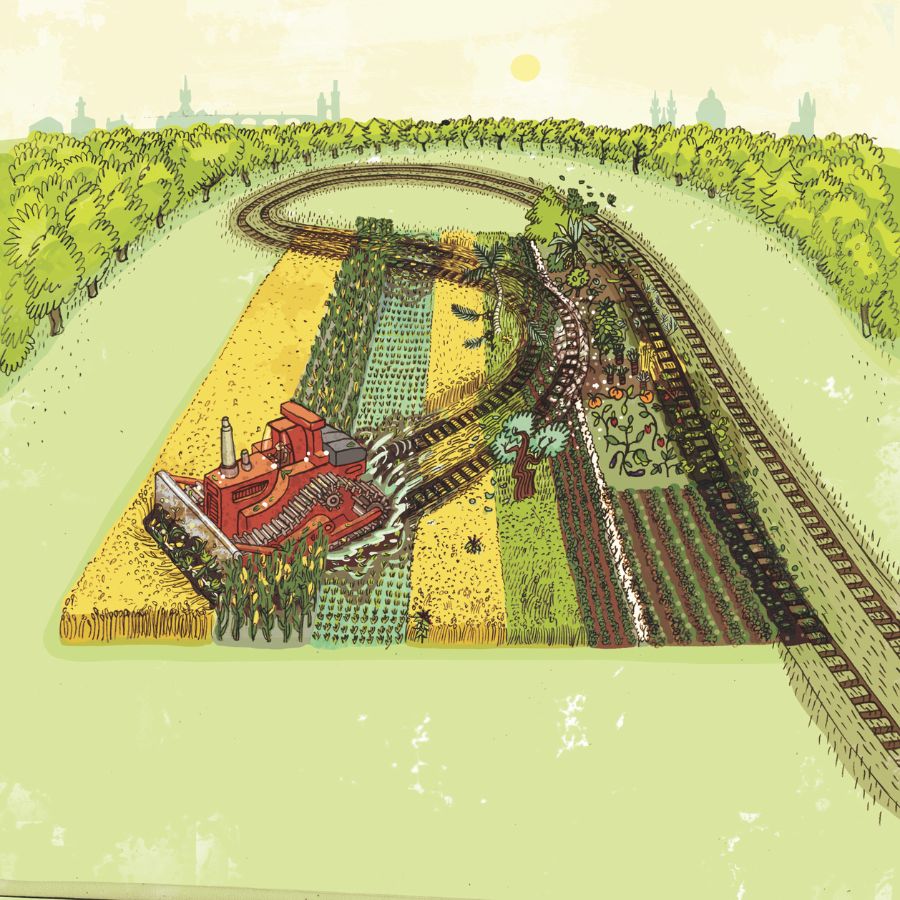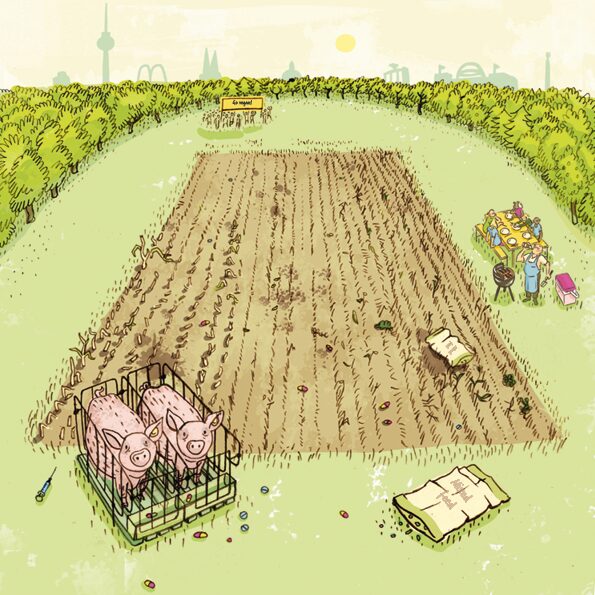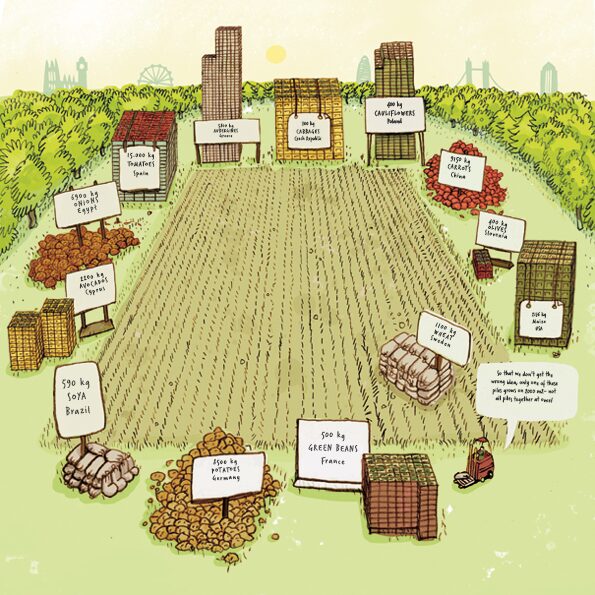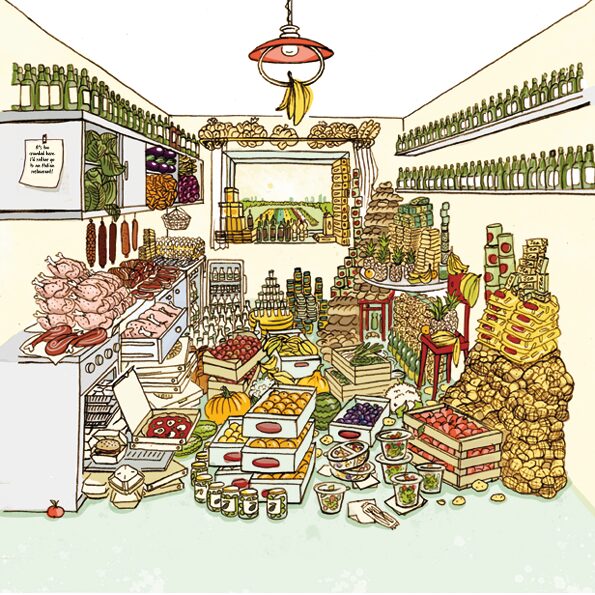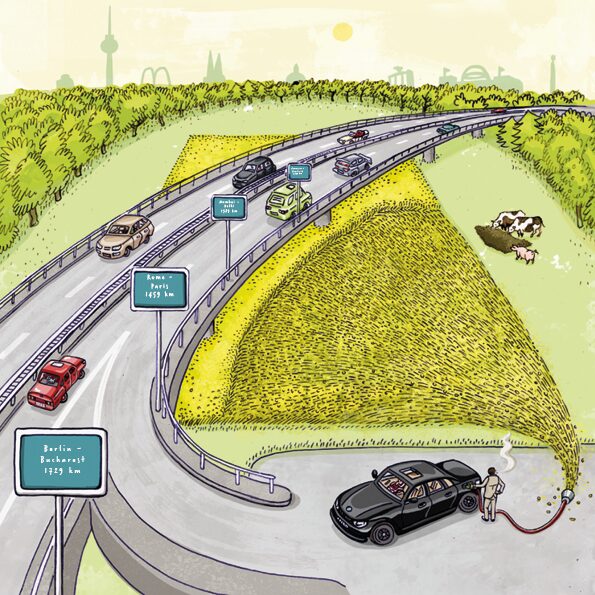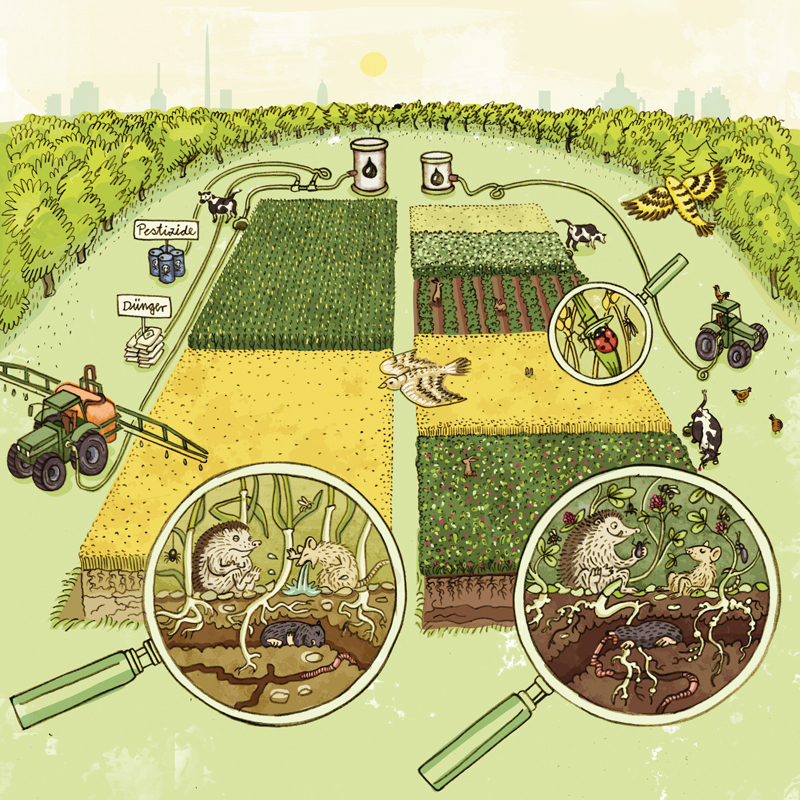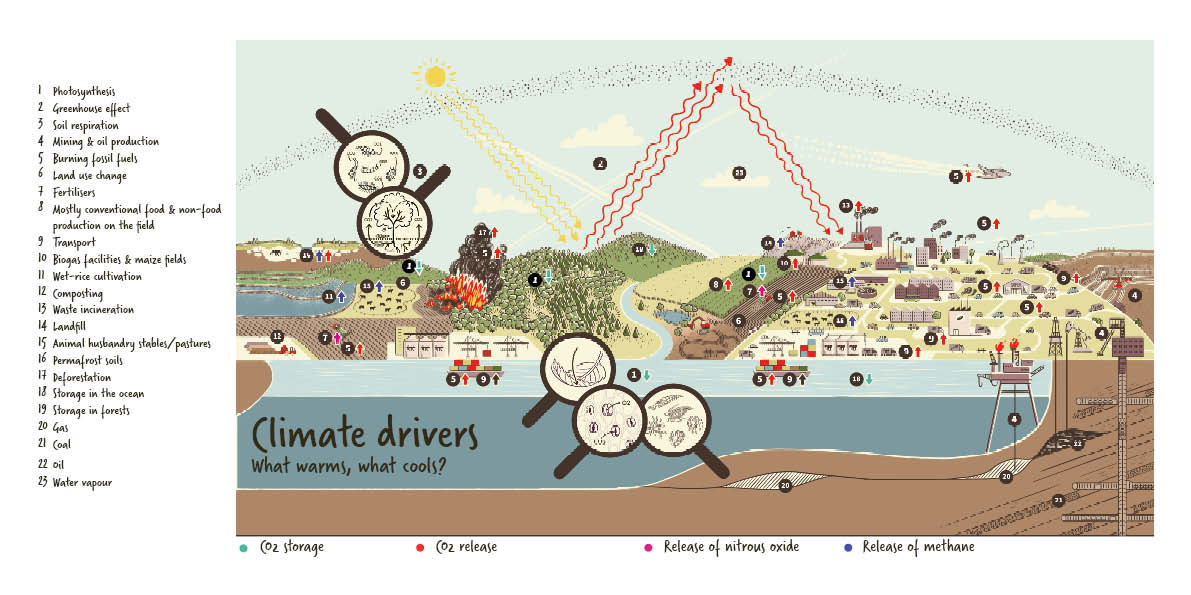Archives: Topics
Size ratios So how big is 2000 m² actually? Try to visualise 40 by 50 metres, for example, or even 20 by 100. That’s 175 parking spaces for cars, two 50-metre swimming pools with eight swimming lanes each, or a third of a soccer pitch, significantly more land than most allotment gardeners would like to…
Diversity on 2000 m² Who else lives on our 2000 m²? When well cared-for, your 2000 m² are teeming with life: trillions of microorganisms, bil-lions of fungi, algae, protozoa, millions of bristle worms, springtails and mites, thousands of millipedes and, of course, earthworms that work the soil. Moles, mice and birds feed on your land,…
Loss & waste What’s lost along the way? To put 2000 calories on the plate, an average of 4600 calories have to be harvested from the fields worldwide. The Food and Agricultural Organisation of the United Nations (FAO) estimates that 1.3 billion tonnes (or 32 percent of all food) is either lost or wasted: in…
Animal feed Two pigs would eat the entire harvest of your field! We don’t know the names of these two animals, but they are among the 52 million pigs in Germany, 240 million in the EU, and 1.5 billion worldwide that are slaughtered every year. Around nine square metres of arable land are required to…
Cultivation examples How much can be grown on 2000 m²? It’s unbelievable just how much can be grown on 2000 m²! Tonnes of avocados, tomatoes, cabbage, wheat and potatoes. Definitely more than you could ever eat in a year. However, yields vary greatly depending on the location, the wea-ther in a given year and the…
Burning Out How far can you travel with 2000 m²? Is producing fuel and energy from agricultural fields truly a sustainable solution to the climate crisis? Let’s do the maths: the average rapeseed yield from 2000 m² of land in the European Union is about 650 kilograms, which can be converted into 272 litres of…
Chemicals in the field Will artificial fertilisers and pesticides save us from hunger? Artificial fertilisers and synthetic pesticides were introduced after the First World War and have dominated industrial agriculture worldwide since the 1960’s. They offer the promise of high yields with minimal labour, particularly in monoculture systems. However, the widespread use of these chemicals…
The global climate What does our diet have to do with climate change? The atmosphere, the gaseous envelope surrounding the earth, makes life on our planet possible. Its composition is significantly influenced by life itself and has changed dramatically throughout various geological eras. Water vapour and trace gases, such as carbon dioxide, methane, and nitrous…

